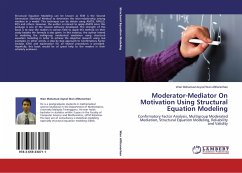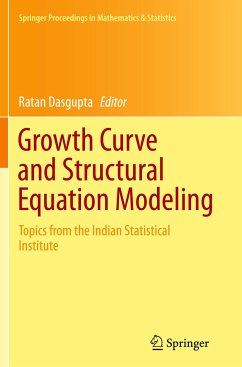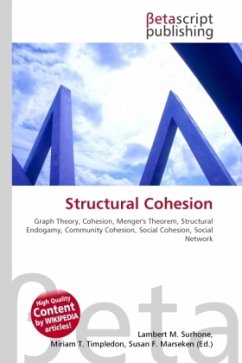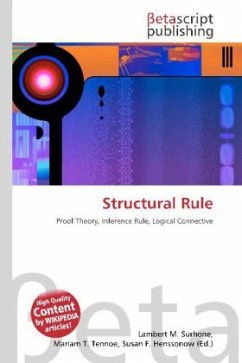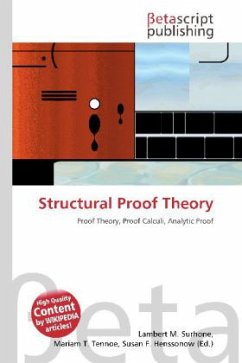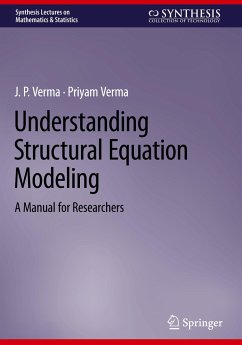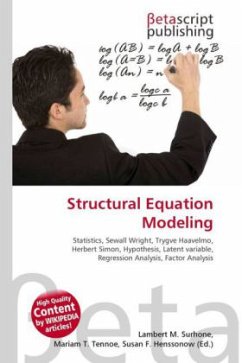
Structural Equation Modeling
Versandkostenfrei!
Versandfertig in 6-10 Tagen
23,99 €
inkl. MwSt.

PAYBACK Punkte
12 °P sammeln!
Please note that the content of this book primarily consists of articles available from Wikipedia or other free sources online. Structural equation modeling (SEM) is a statistical technique for testing and estimating causal relationships using a combination of statistical data and qualitative causal assumptions. This view of SEM was articulated by the geneticist Sewall Wright (1921), the economists Trygve Haavelmo (1943) and Herbert Simon (1953), and formally defined by Judea Pearl (2000) using a calculus of counterfactuals. Structural Equation Models (SEM) allows both confirmatory and explora...
Please note that the content of this book primarily consists of articles available from Wikipedia or other free sources online. Structural equation modeling (SEM) is a statistical technique for testing and estimating causal relationships using a combination of statistical data and qualitative causal assumptions. This view of SEM was articulated by the geneticist Sewall Wright (1921), the economists Trygve Haavelmo (1943) and Herbert Simon (1953), and formally defined by Judea Pearl (2000) using a calculus of counterfactuals. Structural Equation Models (SEM) allows both confirmatory and exploratory modeling; thus, it is suited to both theory testing and theory development. Modeling usually starts with a hypothesis, represents it as a model, operationalises the constructs of interest with a measurement instrument, and tests the fit of the model to the obtained measurement data. The causal assumptions embedded in the model often have falsifiable implications which can be tested against the data.




